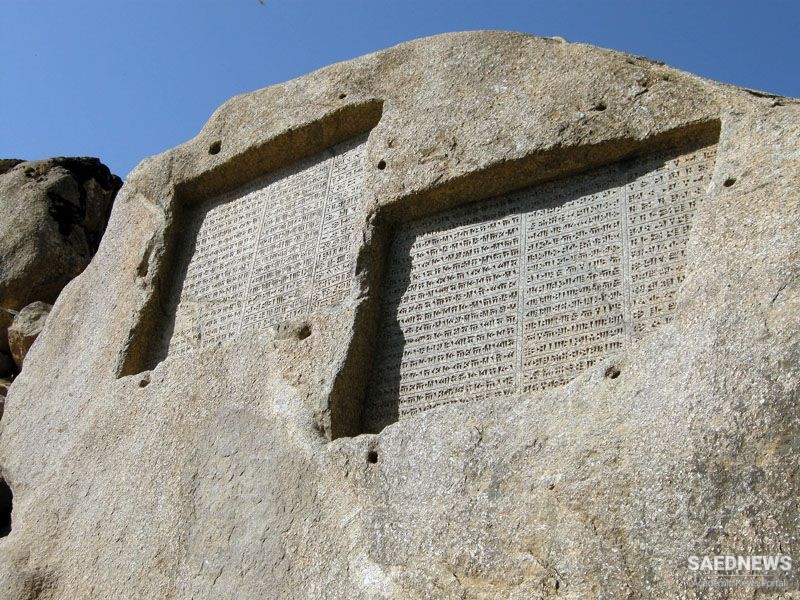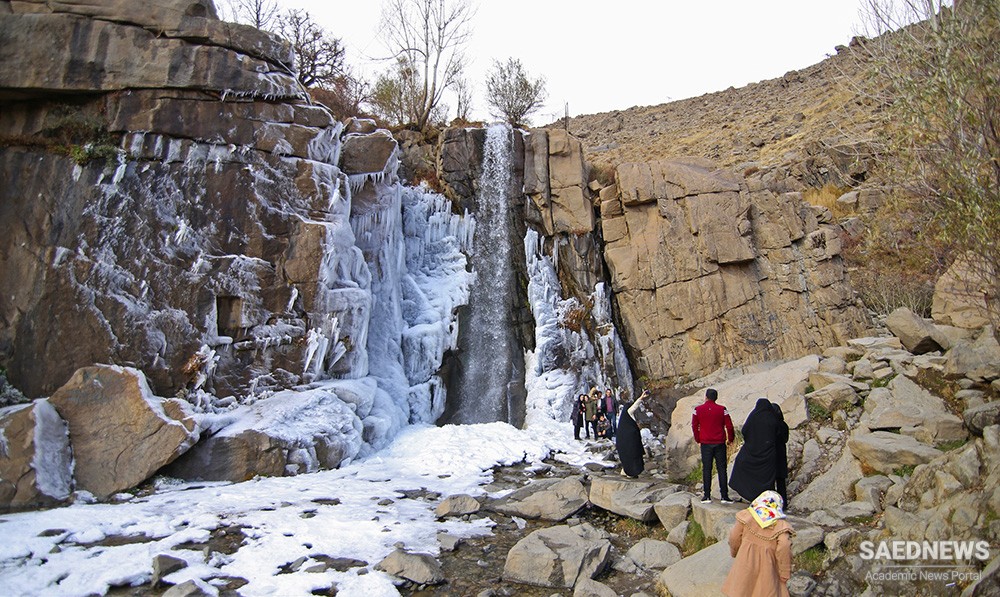This monument is the popular designation of two trilingual inscriptions in three languages by the Achaemenid Darius I and Xerxes in a pass through the Alvand mountain.
Both sections were carved in three ancient languages: Old Persian, Neo-Babylonian and Neo-Elamite. The incscriptions start with praise of the Zoroastrian God (Ahura Mazda) and describe the lineage and deeds of the mentioned kings.
Each of these inscriptions was engraved in three languages, three columns, and twenty lines. The first left column in Old Persian, the middle one in Elamite or Susian and on the right side in Babylon or Akkadian and all were written in cuneiform alphabet. The first word of the column is "bagn" that means God. In contemporary history many Orientalists intended to decode the inscriptions such as Ozen Flanden, French archeologist and Pascal Cast his assistant (1840- I 841 AD). At last Sir Henry Rovilnson - an English scientist, deciphered it and the people belief that these inscriptions are hidden treasures written codes was interpreted.
Later generations who could not read the Cuneiform alphabets of the ancient Persian assumed that they contained the guide to an uncovered treasure; hence they called it Ganjnameh. The name literally means “treasure epistle”, but it has also been called Jangnameh whose literal translation is “war epistle”.
The translation of the text on the right plate, attributed to Xerxes, is:
“The Great God Ahuramazda, greatest of all the gods, who created the earth and the sky and the people; who made Xerxes king, and outstanding king as outstanding ruler among innumerable rulers; I the great king Xerxes, king of kings, king of lands with numerous inhabitants, king of this vast kingdom with far-away territories, son of the Achaemenid monarch Darius.”
Two modern contemporary carved tablets have been placed in the site’s parking lot with Persian explanation and its English translation.
Both inscriptions have the same Content except the name Xerxes instead of Darius, Vishtasb instead of Darius and the phrase; "hyah maoistah baganam" which means; " who is the greatest God" in the Xerxes inscription. These inscriptions had different names. Ebn-e Faghih Hamedani in his book "Akhbar Oh-Soldan" called them "Tab Nabar." Their other names are "Sangnebeshteh, Nebesht Khodayan. Katibeh ha-ye Alvand. Jang Nameh and Ganjnameh, the two last ones have been used recenty. It is registered as a National and historical Iranian monument No. 92 dated 6.1.1931.
In 1995 the English and Persian translation of these Inscriptions have been engraved on two granite rocks by Hamedan municipal and they have been placed in the other part of Ganjnameh.



 Avicenna Mausoleum, the Intellectual Inspiration of Hamadan
Avicenna Mausoleum, the Intellectual Inspiration of Hamadan














































